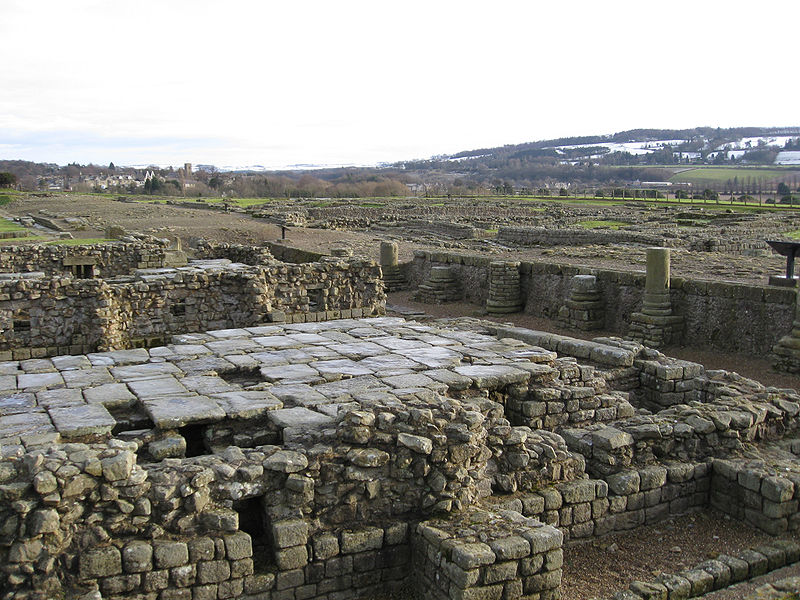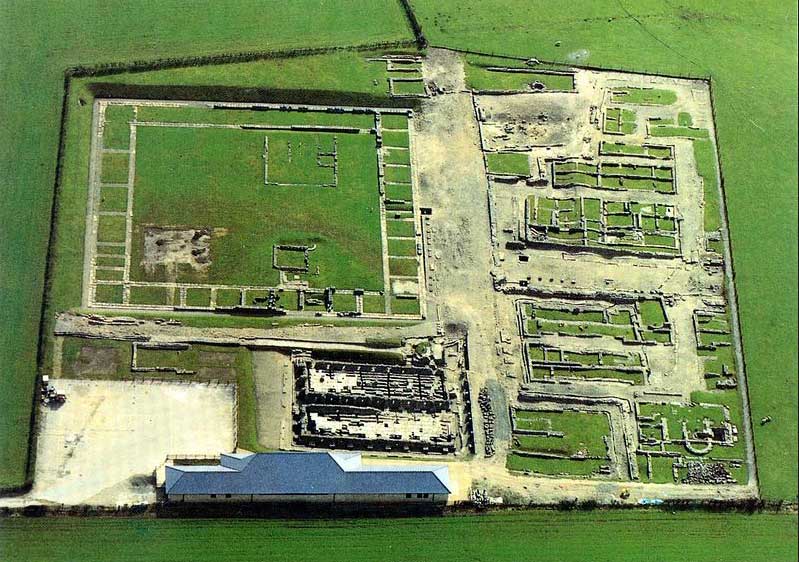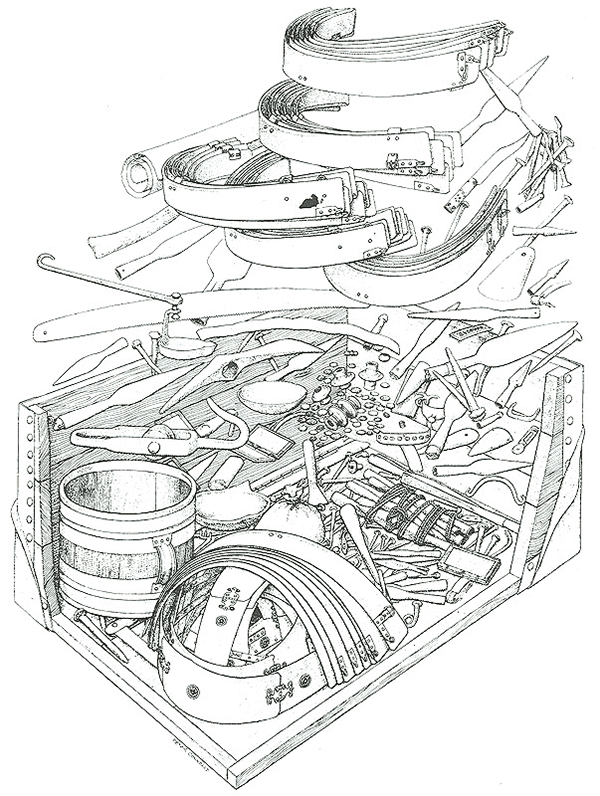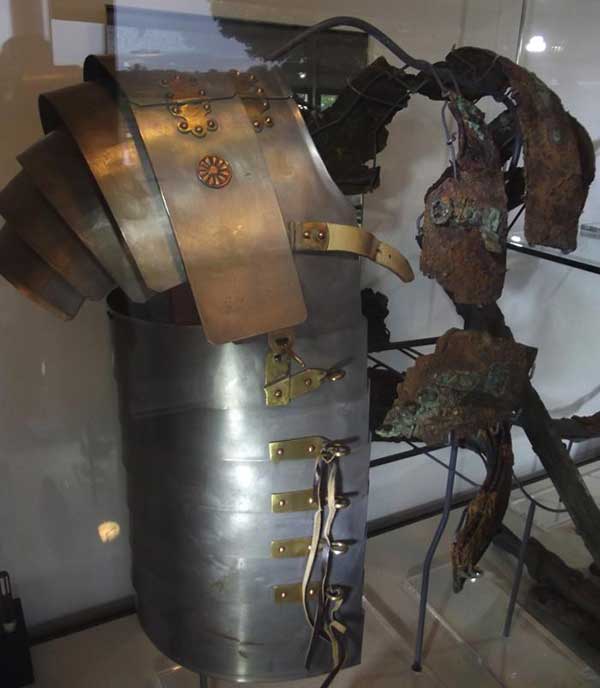Corbridge
Roman Site and Museum
About The Corbridge Roman Site and Museum

Visitors to Corbridge can walk along the main street of this Roman garrison town, flanked by the remains of granaries, a fountain house, markets, workshops and temples.
Sitting astride the intersection of Roman Dere Street and Stanegate, Corbridge was initially the site of a series of important forts. But after Hadrian's Wall was fully commissioned it developed into a prosperous town, a tempting leave-centre for off-duty Wall garrisons.
Abandoned after the collapse of Roman rule in Britain, the town centre has been systematically excavated, producing the fascinating array of finds now most attractively displayed in the site museum.
Not all the sites on Hadrian's Wall were heavily guarded fortresses. Corbridge was once a bustling town and supply base where Romans and civilians would pick up food and provisions. It remained a vibrant community right up until the end of Roman Britain in the early years of the 5th century.
Today, you can still walk through the town's streets and experience a time-capsule of Roman life. You can also discover Roman armour and trinkets uncovered with the Corbridge Hoard at the museum. The Hoard was one of the most significant finds in Roman history, providing us with a fascinating insight into the life of a soldier on the Wall. The museum is also home to the Corbridge Collection, the largest of the Hadrian's Walls collections.

The place-name appears in contemporary records as both Corstopitum and Corie Lopocarium. These forms are generally recognised as corrupt. Suggested reconstructions include Coriosopitum, Corsopitum or Corsobetum. However, the Vindolanda tablets show that it was locally referred to by the simple form, Coria, the name for a local tribal centre. The suffix ought to represent the name of the local tribe, a member of the Brigantian confederation, but its correct form is, as yet, unknown. It subsequently gave its name to Corbridge, albeit by processes which are debated.
Soon after Roman victories in modern Scotland, around AD 84, a new fort was built on the present site with turf ramparts and timber gates. Internally, barrack blocks surrounded a headquarters building, a commander's residence, administrative staff accommodation, workshops and granaries. It was probably occupied by a 500-strong cavalry unit called the Ala Petriana, but was destroyed by fire in AD 105. A second timber fort was built guarding a major crossing of the River Tyne at a time when the Solway Firth-Tyne divide was the Roman frontier. Around AD 120, when Hadrian's Wall was built, the fort was again rebuilt, probably to house infantry troops away from the Wall. About twenty years later, when the frontier was pushed further north and the Antonine Wall built, the first stone fort was erected under the Governor Quintus Lollius Urbicus.
The Corbridge Hoard
The Corbridge Hoard is a hoard of mostly iron artefacts that was excavated in 1964 within the Roman site of Coria, next to what is now Corbridge, Northumberland, England (not to be confused with a hoard of gold coins found nearby in 1911).
It came from amongst the central range of administrative buildings in one of the early forts underlying the later Roman town and probably dates to between AD 122 and 138.

The contents (which included iron/steel, copper-alloy, lead-alloy, stone, glass, and organic items) were buried in an iron-bound, leather-covered chest, made of alder-wood planks fitted together with dovetails at the corners.
The most famous objects within were six upper and six lower half-units of 'lorica segmentata' armour which, although mis-matched, could represent as few as three whole cuirasses, or elements of twelve partial sets. It was this discovery that enabled Charles Daniels and H. Russell Robinson to understand how this type of armour should be reconstructed. Prior to the discovery of the Hoard, "people knew there was the segmented armour, but we didn't know how it was put together or how it was made".

The Corbridge Hoard also contained bundles of spearheads still tied together with cord; artillery bolts; a sword scabbard; various tools and implements (including a pulley-block and a crusie lamp); items associated with carpentry, such as nails and joiner's dogs; a small wooden bucket or tankard. There were also fragmentary remains of feathers (), wax writing tablets, and (almost uniquely in Roman Britain) fragments of papyrus.
All of the organic components in the Hoard (including the box itself) had been preserved by mineralization brought about by the rusting of its iron and steel contents.
The Hoard has been variously interpreted as material hurriedly concealed from attacking barbarians; deliberately buried in order to accumulate verdigris and rust for medicinal purposes; or detritus from clearing out a workshop when a garrison moved on from the site (and buried to deny the raw materials to an enemy.
Parts of the Hoard are on display at Corbridge Roman Site museum, whilst some other material from it is on display in the Great North Museum in Newcastle upon Tyne. From August 2012, the Hoard is in a new display at the Corbridge Roman site. The exhibition includes a replica which will help visitors envisage how the armour once looked as well as a film showing footage never before shown in public of the excavation of the hoard as it was dug up from the trench in 1964.
Useful information
- Free parking provided
- Picnic area provided
- Special facilities for disabled
- Wheelchair access
- Gift shop in museum
- Licensed restaurant/cafe nearby
- Dogs allowed
- Coach parties welcome
Contact:
- Corbridge Roman Site
3 Corchester Ln
Corbridge
Northumberland
NE45 5NT
- Tel: 0370 333 1181
- Website : https://www.english-heritage.org.uk/visit/places/corbridge-roman-town-hadrians-wall/prices-and-opening-times/





















